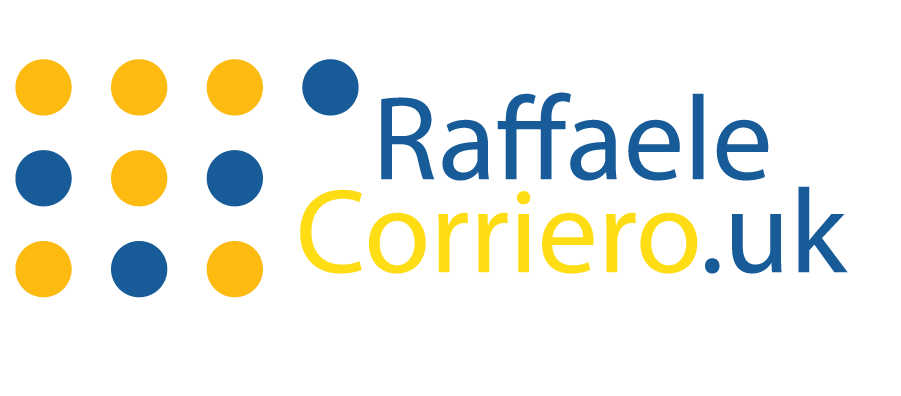Did you know that over 90% of online experiences begin with a search engine? Google leads with more than 92% of the global market share. For visibility and business growth, getting your website up on Google’s rankings is key. Our guide of 200 SEO tips, inspired by expert Brian Dean, offers top strategies for search engine optimisation success in 2024.
This guide covers proven, speculative, and controversial SEO factors. It aligns with the latest trends for UK digital marketing. It focuses on 8 key factors: quality content, backlinks, technical SEO, keyword optimisation, user experience, schema markup, social signals, and brand signals. These are essential for top Google rankings.
Key Takeaways
- Understand the significance of quality content for SEO success.
- Leverage the power of backlinks to boost your site’s authority.
- Optimise technical SEO elements to improve site performance.
- Implement effective keyword optimisation for better search relevance.
- Enhance user experience to satisfy both users and search engines.
- Utilise schema markup to stand out in search engine results.
- Capitalize on social and brand signals to strengthen online presence.
Domain Factors
Understanding domain factors is key to improving your website’s search rankings. Domain age was once seen as crucial. But, Google’s John Mueller says it’s not as important as we thought. However, keyword domains still help a bit, despite their reduced effect.
The length of domain registration also matters. Domains registered for many years can show trust and legitimacy. This can impress search engines. Including relevant keywords in subdomains can also boost your site’s rank.
The past ownership of a domain is important too. Domains with a clear and steady ownership history are preferred by search engines. On the other hand, domains with private WhoIs or those linked to a penalised owner are closely checked by Google.
Top-level domains (TLDs) also have a big impact. Local TLDs like .co.uk can improve rankings in that country. However, they might not work as well globally. This can be a plus for companies focusing on local markets.
In short, while old beliefs about domain age and keyword domains still hold some weight, it’s the mix of these with smart domain registration choices and TLD considerations that boosts your SEO.
Page-Level Factors
Page-level elements are vital for SEO. Including relevant keywords in Meta tags, Title Tags, and H1 tags is key. It helps search engines understand your content better. Good Meta Descriptions also boost visibility and attract clicks from search result pages.
Using keywords smartly is crucial. Balancing their frequency with TF-IDF analysis helps. Long, rich content usually ranks better if it’s relevant and well made. Google also appreciates fresh content, pushing for regular updates.
Adding LSI keywords enhances your content’s context. It makes your page more relevant to searches. Consistent Title Tags and smart keyword placement boost your page’s SEO, making it easier for people to find.
To wrap up, pay attention to Meta tags, use TF-IDF, keep your keywords in check, and update content often. Doing these will help improve your website’s search ranking. It makes your site more appealing to search engines and users alike.
Site-Level Factors
Site-level factors play a big role in how well a website does on search engines. Having a well-planned site structure and sitemaps is key for search engines to find and understand your site. Also, things like an SSL certificate and keeping your site updated help build trust and credibility.
Importance of Site Architecture
The way your site is set up is really important for SEO and how easy it is to use. A good site structure means users and search engines can navigate your site easily. This makes for a better user experience and helps search engines index your site more effectively, which can boost your rankings.
Presence of Sitemaps
Every website should have a sitemap. It’s a list of all your important pages that lets search engines find and index your content easily. Keeping your sitemap updated means even your newest pages get indexed quickly. This is good for your SEO and keeps your site fresh.
Having an SSL certificate is crucial for security and trust. It protects user data and makes people feel safe on your site. Server location matters too for site speed and accessibility, especially for local searches. Regularly updating your site with new content and making technical improvements shows search engines your site is in good shape and trustworthy.
Backlink Factors

Understanding and optimising backlink factors are crucial for a strong SEO strategy. It’s vital to consider the trustworthiness of linking pages, the quality of backlinks, and diversity in your links. These elements boost your website’s search engine position.
Trust Factor of Linking Page
The linking page’s trust matters a lot for your backlink profile. Search engines look at the linking sites’ trust to gauge their impact on your site’s authority. High-authority sites like The Guardian or BBC offer more valuable backlinks than less known ones. Aim to get links from reputable sites.
Quality of Backlink Sources
Good backlink strategy focuses on quality sources. Get links from credible, relevant websites. Relevant anchor texts are important too; they help search engines understand the link’s context. Using accurate anchor texts boosts your site’s SEO.
Diversity of Link Profile
A diverse backlink profile shows a balanced link-building approach. Include links from various domains and countries to show your global presence. A mix of do-follow and no-follow links makes your profile appear genuine. Diversity in links improves your SEO and site credibility.
User Interaction
User interaction is critical for enhancing a website’s performance on search engine results. Understanding how visitors use your site offers key insights. It helps gauge its success and attractiveness.
Organic Click Through Rate
Organic Click Through Rate (CTR) shows how enticing your content is on search results. A high organic CTR means people are encouraged to click because of appealing meta titles and descriptions. To boost it, tweak these elements to match what users are searching for. This increases engagement and improves RankBrain scores.
Dwell Time
Dwell Time measures how long visitors stay on a page before going back to the search results. It reflects the content’s relevance and quality. Sites that hold users’ attention tend to rank better. By providing valuable content, you can lengthen dwell times and uplift user engagement.
Bounce Rate
Bounce rate tracks visitors who leave after viewing just one page. A high bounce rate can point to a poor user experience or content that doesn’t meet users’ needs. Addressing this involves improving both content and page design. Enhancing usability and content quality helps meet users’ expectations and increases engagement.
Special Google Algorithm Rules

Google’s algorithm changes often to better meet what users look for. It works hard to offer relevant and top-notch search results. This happens through quick responses to algorithm updates. Each update shows a better grasp of what users want to find and the need for new content.
The idea of freshness need is vital for Google. Sites that keep their content updated with latest info tend to rank better. This strategy of adding new content makes sure people get the most up-to-date results. It helps users be happier with what they find.
Google also makes sure diversity in SERPs is a priority. This means the results you see aren’t just a bunch of similar pages. By showing different kinds of sources and content, Google makes searching online a better experience. It lets users see a wide range of views and info.
Understanding search intent is also key. Google looks at why people search for things to show the best results. This applies to looking up product reviews, services, or how-to guides. By doing this, Google aims to give a smooth and trusted experience for everyone.
Brand Signals
Brand signals help build a brand’s online presence and reputation. They are key indicators for search engines such as Google. They help determine a brand’s authority and trustworthiness. Improving these signals can boost a company’s online visibility and credibility.
Building Brand Authority
Creating a strong brand online is about consistent, quality content. Having your brand mentioned positively across reputable sources strengthens its reputation. Customer interaction is also crucial.
Engaging with users on reviews, forums, and blogs where your brand is discussed positively can boost your mentions. This improves your overall authority.
Social Media Influence
Social media platforms are key for enhancing brand signals. A well-planned social media strategy can increase brand mentions and encourage engagement.
Using platforms like Facebook, Twitter, and LinkedIn helps in interacting with customers and sharing useful content. A loyal community can be built this way. Brand mentions and positive engagement on social media tell Google about your brand’s legitimacy and popularity.
On-Site Webspam Factors

On-site webspam factors can seriously hinder your SEO efforts and lead to harsh penalties from search engines. One common problem is duplicate content. This issue can make your website less visible and lower its position in search results.
Keyword stuffing is another bad practice. It’s vital to use keywords smartly, but too many can spoil your webpage. Overdoing keywords harms the user experience and can result in penalties. Hidden text is also a no-go. Search engines see this as attempting to trick them and will penalize your site.
Cloaking is about showing different content or URLs to users versus search engines. This deceptive move can harm your site’s trustworthiness and its ranking.
Here are some key on-site webspam issues to steer clear of:
- Creating duplicate content on several pages.
- Overusing keyword stuffing to tweak rankings.
- Hiding hidden text to disguise keywords or links.
- Doing cloaking by presenting different content to search engines than to users.
To protect your site’s integrity and ensure users have a good experience, avoid these practices.
Off-Site Webspam Factors
Keeping your website’s credibility with search engines means dealing with off-site webspam. Practices like too many spammy backlinks and making your site look too perfect can hurt your ranking. We’ll look at how to keep your backlinks clean and your site trustworthy.
Avoiding Over-optimisation
Using the same anchor text too much can seem suspicious to search engines. It can harm your site’s search performance. Aim for a variety of anchor texts that sound natural. Balance your backlink profile to appear more organic to Google. This improves link quality and supports genuine interlinking.
Managing Backlink Spam
Spammy backlinks can damage your site’s SEO health. Check your backlinks often to weed out the bad ones from low-quality sites. Try to get links from respected domains with strong authority. Make sure your backlinks come from many different reliable sources. This helps keep your link quality high and your site’s reputation solid.
Content Factors for SEO

The key to SEO success lies in making content that stands out to both people and search engines. It’s crucial that every piece of content is filled with useful, appealing, and insightful information. By doing thorough keyword research, you make sure your content matches what people are looking for.
It’s vital for content to be directly relevant to users’ needs and answer their questions well. To improve your SEO, cover your topics fully by addressing every possible question a user might have. This approach greatly enhances your content’s relevance.
Longer content tends to do better in search rankings, as long as it’s both high-quality and relevant. It’s not just about hitting a word count, but offering real value. Articles that delve deeply into topics are often ranked higher because they give a comprehensive view of the subject.
It’s important to include keyword research when making content. Finding the right keywords and using them in a natural way in your articles makes sure your content can be found by search engines and is useful for users. Keeping a balance between using keywords and writing naturally is key.
- Content quality: Always aim for informative, engaging, and well-structured content.
- Content marketing: Implement strategies that boost visibility and engagement.
- Relevance: Ensure your content answers users’ queries effectively.
- Keyword research: Find and use relevant keywords naturally in your content.
Keyword Optimisation
Keyword optimisation is key for making your content easy to find. It boosts relevance to what people search for. By placing keywords wisely, you can improve SEO and make your content more relevant.
Keyword Placement Strategies
Placing keywords well is vital for good SEO. You should use main keywords in title tags, headings, and starting sections. This helps search engines get your content and shows users it’s relevant.
Using Long-Tail Keywords
Long-tail keywords help draw in specific visitors likely to take action. Using longer, specific phrases attracts users with clear search goals. These keywords have less competition, helping your content rank better.
It’s also key to get keyword density right. This means your content won’t seem spammy but will be well optimised. Aim for a natural way of including keywords for real SEO success.
User Experience (UX)
User Experience (UX) greatly affects how people interact with your website. It impacts how well your website does in search engines. Making your website easy to use is key. This ensures visitors find what they’re looking for and enjoy their time on your site.
Improving Site Navigation
Having a clear navigation helps people use your site without getting frustrated. By making your content easy to find, users are more likely to stay longer. Use simple menus, clear labels, and good links to make your site better to navigate.
Mobile-Friendly Design
It’s crucial your site works well on all devices, especially on mobile phones. As more people use their phones to go online, your site must be mobile-friendly. Google prefers websites that look good on mobile, ranking them higher.
Core Web Vitals are also key for a good UX. They include loading speed, how quickly your site responds, and how stable it is while loading. Working on these can keep people on your site longer. It also helps your site rank better in search results.
Schema Markup
Schema markup is key to modern SEO tactics. It helps websites give clear data to search engines. This clarity boosts the quality of search results and raises website visibility on SERPs.
Importance of Structured Data
Structured data is vital for search engine processes. With schema, businesses create rich snippets that show up directly on SERPs. These snippets make search results more attractive. They help users find important info quickly, increasing click-through rates.
Using Schema for SEO
Using schema markup boosts SEO by making content clear to search engines. Relevant structured data helps websites target effectively. It increases the chances of appearing in searches. Good schema use means wider reach and better competition stance.







